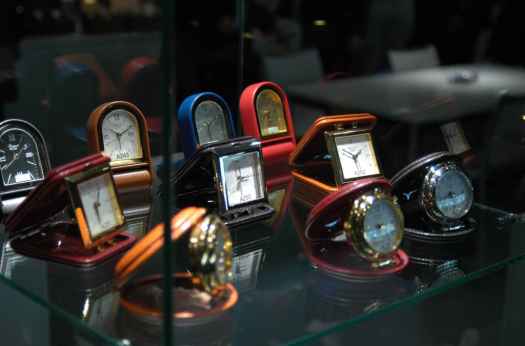Whither the watch
Anyone with a decent nose and a functioning lizard brain would have noticed the change 20 meters after the turnstiles at Baselworld 2011. The pungent, oily smell from the tchotchke candles sputtering away at the Zenith stand had vanished into last year’s thin air. Gone too were all the signs of the Thierry Nataf era, including those pseudo-brainy ads with the frowning male models and the girlies pushing very costly and blustery watches. What remains is sobriety, functionality, understatement, in other words pure Zenith from the days of 2 + 2 = 4. The Striking Tenth, already prominently displayed last year, still has flagship radiance, the new Stratos is a relaunch from 1969, sportive, muscular, but not steroidal.
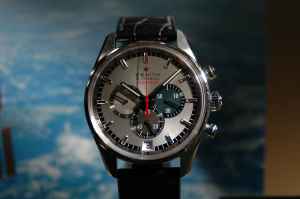
Zenith represents well the changes that have swept the Swiss watch industry over the past, say, 10 years, when people believed in the magic growth of money and the Madoff snake oil. How could something promoted with loud and ostentatious events and fetching absurd prices not be worth a lot of money? Today, the company is buying back the unsellables and moving forward with its classics – with, I hear, some technical involvement from LVMH Group partner Hublot. Not everyone thinks poorly of Nataf. “Whenever I used to show my watches to distributors, I was ignored,” recalls one former Zenith salesman from the early days. “Now they wouldn’t dream of doing that anymore. That is to Nataf’s credit.”
The big picture
 Essentially, the industry is back with an excellent year behind it and rosy, nay incandescent, prospects for the coming one, provided some new bubble doesn’t appear on the horizon and then burst again: Exports rate up around 22 percent, February seems set to be a record month, even beating the great 2008. The exhilaration was palpable, audible and legible across the board, and was not really affected by the war in Libya or the threat of nuclear meltdown in Japan (this issue did allegedly keep some of the Japanese away, but one distributor mentioned that it would be out of character for them to actually not show up) … From Karl-Friedrich Scheufele of Chopard, to Jean-Claude Biver of Hublot, all were radiant, enthusiastic, ecstatic. It was more than just the usual uplift; for even at the height of the Great Recession, while easily-earned yet vaporous cash snapped, crackled and popped under the dousing by the liquide glaciale of reality, the mood at Baselworld remained, at least rhetorically, positive. Nevertheless, this year there a slightly giggly mood going round, similar to that at the foot of a particularly shaky rollercoaster, when the pale passengers disembarking look around to see if anyone had flown off the carriage. In fact, just about everyone seems to have made it, even though there are a few bruises and headaches.
Essentially, the industry is back with an excellent year behind it and rosy, nay incandescent, prospects for the coming one, provided some new bubble doesn’t appear on the horizon and then burst again: Exports rate up around 22 percent, February seems set to be a record month, even beating the great 2008. The exhilaration was palpable, audible and legible across the board, and was not really affected by the war in Libya or the threat of nuclear meltdown in Japan (this issue did allegedly keep some of the Japanese away, but one distributor mentioned that it would be out of character for them to actually not show up) … From Karl-Friedrich Scheufele of Chopard, to Jean-Claude Biver of Hublot, all were radiant, enthusiastic, ecstatic. It was more than just the usual uplift; for even at the height of the Great Recession, while easily-earned yet vaporous cash snapped, crackled and popped under the dousing by the liquide glaciale of reality, the mood at Baselworld remained, at least rhetorically, positive. Nevertheless, this year there a slightly giggly mood going round, similar to that at the foot of a particularly shaky rollercoaster, when the pale passengers disembarking look around to see if anyone had flown off the carriage. In fact, just about everyone seems to have made it, even though there are a few bruises and headaches.
Dazed and dazzled, however, the industry was to an extent caught by surprise by the surge, as Max Büsser of MB&F told me in an interview in his customary pithy style: “The suppliers were anemic in the crisis, and now they’re being asked to run a 9-second 100 meters, and that’s impossible.”
In other words, supply might be lagging somewhat, while some brands, caught unawares, have to restock not only on product, but on the talent they threw off the bus perhaps a little hastily. The demand itself is driven mainly by China, which picked up around half the exports; Europe is doing well and the USA is, well, no one really knows, while the Middle East no one seems willing to talk about.
Different day, same hit
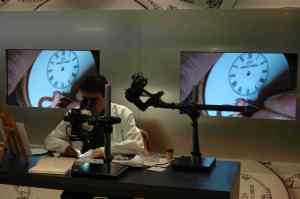
What Chinese demand really signifies in terms of design is difficult to tell. Some brands have an older connection to Asia, like Jaquet Droz and the so-called “Beijing collection,” whose styles range from minimalist to complex. At the booth, one of the Droz artists was demonstrating the extraordinary technique of drawing on enamel, which has been one of the brand’s trademarks.
The deeper question though is whether tigers on watches is going to truly appeal to Chinese consumers. As this segment of the industry is mostly market driven, determining what is going to be the big hit is perhaps irrelevant. Hardly astonishing then to find horological innovations that are carrying on from last year’s trends. 2010, one might remember, was back to basics. As the economy is as predictable as the weather along the English Channel, few seemed prepared to take massive chances. Watches were a touch smaller, some flatter, steel was back (that trend has slowed), and prices were looking reasonable even in the haut-de-gamme range. And so the sudden surge may have caught the industry off guard, an industry that produces new material with lag uncharacteristic for our just-in-time times.


So steering a solid course through the recession without trying anything outrageously new proved to be the only strategy, hence many of the booths revealed good friends from last year some in new guise, some appearing perhaps a tad larger, with a few extra daubs of color or deco. Hall 1, home of the biggies including Swatch Group, Patek Phillippe, the LVMH companies, seemed full of watches that were indeed beautiful, sexy, masculine, anything but outrageous. From Breitling to TAG Heuer, from Breguet to Longines, there were no shocks to the fans, to the collectors, none, at last, that were truly visible. And while the crowds were fairly heavy, the frenetic feeling was not there. Even Blancpain, whose CEO Mark Hayek succumbed to the sophomoric dream of driving a fast car with the shape and color of a crushed beetle, happily continues to thrive with its classics, notably the Villeret Complete Calendar.
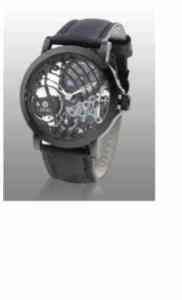
This overall cautiousness – or is it just the surprise – may be the chance for brands with lower budgets and less visibility. 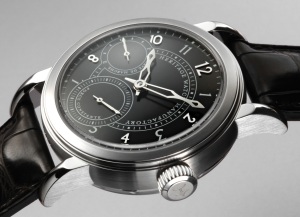 Or for those who seek a more intimate sense of beauty and quality. Or even for the newbies on the block. Heritage Watch Manufactory, which went live in September 2010, has come up with a purist’s delight and has done its marketing properly. This classic looker (the Tensus, for instance) , boasts five patented innovations, including a special escapement, double spring barrel and an adjustment system It will no doubt find its fans, perhaps among those who wish to remain in the Glashütte mold, in spite of a solid price tag ranging from CHF 15,000 to CHF 50,000. On the other side of the scale is the simple craftsmanship of the tiny Hebe Watch company, which is buried up in Alle the Jura and whose booth was tucked at the farthest geographical point from the entrance in Hall 5. Besides a few small watches in 1920s/30s style from its previous incarnation, Hebe has come out with a few modern skeletons at a good price. The brand, which was already dealing with China in the 30s and in the 80s, was recently purchased by Anouk van de Velde from Belgium, who seems intent on giving the watches in Alle space to develop naturally, while at the same time making them better known. Perhaps a more visible booth?
Or for those who seek a more intimate sense of beauty and quality. Or even for the newbies on the block. Heritage Watch Manufactory, which went live in September 2010, has come up with a purist’s delight and has done its marketing properly. This classic looker (the Tensus, for instance) , boasts five patented innovations, including a special escapement, double spring barrel and an adjustment system It will no doubt find its fans, perhaps among those who wish to remain in the Glashütte mold, in spite of a solid price tag ranging from CHF 15,000 to CHF 50,000. On the other side of the scale is the simple craftsmanship of the tiny Hebe Watch company, which is buried up in Alle the Jura and whose booth was tucked at the farthest geographical point from the entrance in Hall 5. Besides a few small watches in 1920s/30s style from its previous incarnation, Hebe has come out with a few modern skeletons at a good price. The brand, which was already dealing with China in the 30s and in the 80s, was recently purchased by Anouk van de Velde from Belgium, who seems intent on giving the watches in Alle space to develop naturally, while at the same time making them better known. Perhaps a more visible booth?
Another Belgian to mention is Benoît Mintiens, who launched Ressence, apparently as a compact version of “renaissance of essentials.” That seems to summarize the whole show really well. As an industrial designer, Mintiens seemed out of place in the GrandPalace along with some of the wizards of the watchmaking craft. His idea of a revolving dial, with moving subdials, however, did create some chatter. And it’s not a one-time shot. He is, so he says, already working on the next design, and the next, and the next.
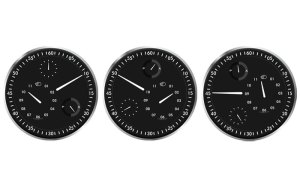
Mechanics, retroistas, and the artists ….Baselworld 2011 continues here.


